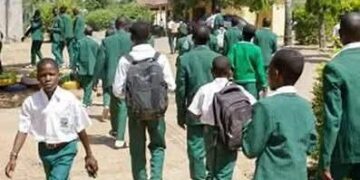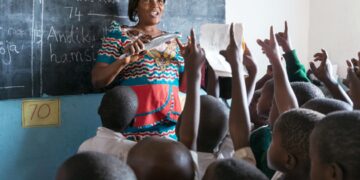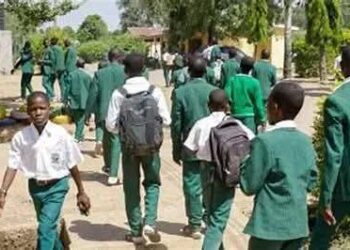Schools in remote areas of Rwanda are set to benefit from a nationwide solar energy initiative aimed at providing electricity to nearly 1,000 institutions by the end of 2025. This move aligns with the government’s newly introduced energy policy, which was launched in February to bridge the power gap in educational facilities.
For Cyamburara Primary School in Buhabwa Village, which has been without electricity since its establishment in 2003, this initiative brings much-needed relief. The lack of power has hindered both teaching and administrative tasks, forcing teachers to travel 35 kilometers to print exams and other essential materials. With transport costs exceeding 3,000 Rwandan francs per trip, the financial burden on the school has been significant.
The absence of electricity has also delayed the rollout of government initiatives such as the ‘laptop-per-child’ program and teacher technology distribution efforts. Many students have only encountered computers in textbooks rather than in practical classroom settings.
“We don’t know how to use computers, and we haven’t seen any at our school. We only learn about them in theory,” said Odile Abanabayo, a Primary Five student.
The impact of the solar power expansion extends beyond education. Residents in rural communities have also expressed their appreciation for the initiative. Claudette Nyirabaributsa from Kayonza District highlighted the financial relief her family has experienced.
“We used to spend 1,200 Rwandan francs every week just to charge our phones in town. Now, with solar power installed at the school, we save both time and money,” she said.
Despite progress, many schools still face infrastructure challenges. Emmanuel Nzasingizuhoraho, a teacher at GS Ruhanga in Gakenke District, noted that while solar panels had been installed, a lack of computer labs and stable internet access continued to hinder quality education and student engagement.
“Now, we can download books, music, and plays to enrich our lessons, but we need consistent internet access to maximize learning,” he emphasized.
Parents and students are advocating for solar power to be extended to homes, allowing children to study at night and improve their academic performance.
“If we had electricity at home, our children could study after dark and achieve better grades,” said Felicien Nkundakozera, a resident of Muyira Sector, Nyanza District.
Government data reveals that about 20 percent of schools in Rwanda still lack electricity, affecting nearly 1,000 institutions. The Ministry of Education has identified 551 schools without access to power and is actively seeking solar solutions.
Rwanda has set an ambitious goal of achieving 95 percent electricity access in schools by 2029, an increase from the current 80.7 percent. The country’s education strategic plan (2024–2029) also aims to boost digital learning adoption from 41.1 percent to 65 percent.
A study published in Joule, a leading renewable energy journal, highlights that across Sub-Saharan Africa, nearly one-third of primary schools and almost half of secondary schools lack electricity. Experts stress that solar power is key to addressing this deficit.
Octave Idrissa, Operations Director at Ignite Power Rwanda, emphasized the need to pair solar installations with internet connectivity.
“We are deploying solar systems along with Starlink internet in government-aided schools. Subsidies from the government could help more schools access these technologies,” he said. Ignite Power has already electrified 30 schools and aims to reach 241 institutions.
Rwanda’s broader energy policy aims to enhance solar power capacity, with a target of generating 30 megawatts of solar energy by 2029-2030 and an additional 20 megawatts by 2034-2035. Currently, Rwanda’s total electricity generation stands at 556 MW, with hydropower contributing 50 percent, methane gas 30 percent, peat 14 percent, and solar energy making up just 4 percent.
Innocent Hakizimana, an electrical engineer, underscored the importance of long-storage solar systems for remote schools, particularly in the Western and Northern regions.














































































 EduTimes Africa, a product of Education Times Africa, is a magazine publication that aims to lend its support to close the yawning gap in Africa's educational development.
EduTimes Africa, a product of Education Times Africa, is a magazine publication that aims to lend its support to close the yawning gap in Africa's educational development.

